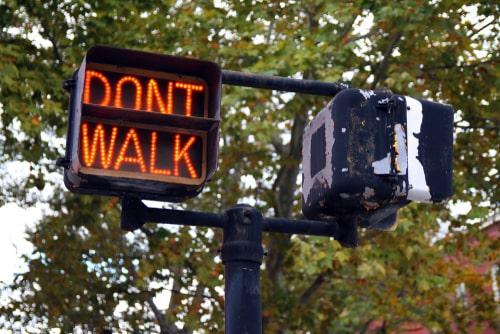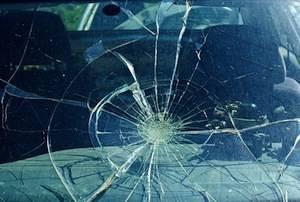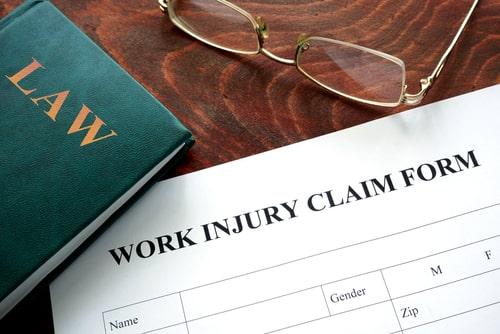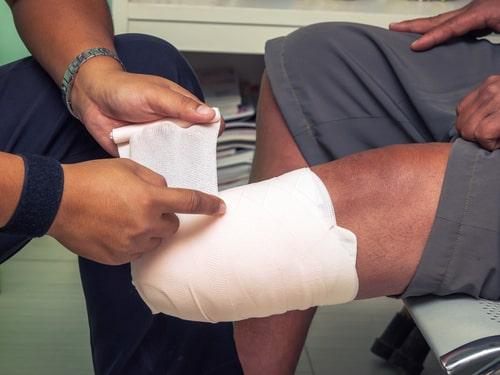Recent Blog Posts
What Are Common Mistakes People Make When Filing a Personal Injury Claim?
 There are many uncertainties that we deal with every day. However, if life has proven one thing, it is this: no one can foresee when a personal injury may befall them. Whether it be getting into a car accident, slipping and falling and injuring your back and neck, or a loved one suffering a wrongful death, we do not know if or when life will throw us a curveball. While that may be true, it is also true knowing how to hit the curveball will help if you are ever faced with one.
There are many uncertainties that we deal with every day. However, if life has proven one thing, it is this: no one can foresee when a personal injury may befall them. Whether it be getting into a car accident, slipping and falling and injuring your back and neck, or a loved one suffering a wrongful death, we do not know if or when life will throw us a curveball. While that may be true, it is also true knowing how to hit the curveball will help if you are ever faced with one.
Is There Any Situation Where a Pedestrian Can be At Fault for a Car Accident?
 The holidays have arrived, and with them comes the hustle and bustle of roadways and shopping centers all over Illinois. Unfortunately, during this busy time of year, it is not uncommon for motor vehicles and pedestrians to come into close contact. Whether it be someone crossing the parking lot of a shopping center weaving in and out of cars or someone simply failing to use a crosswalk, this time of year may see an uptick in car accidents caused by pedestrians.
The holidays have arrived, and with them comes the hustle and bustle of roadways and shopping centers all over Illinois. Unfortunately, during this busy time of year, it is not uncommon for motor vehicles and pedestrians to come into close contact. Whether it be someone crossing the parking lot of a shopping center weaving in and out of cars or someone simply failing to use a crosswalk, this time of year may see an uptick in car accidents caused by pedestrians.
In the battle of right-of-way between humans and cars, humans do not always automatically have the right-of-way. In some situations, pedestrians can be responsible for causing a car accident. Drivers and pedestrians alike have to apply reasonable care on roadways. When reasonable care is not met, accidents and injuries can happen. If you have been involved in a car accident where you believe a pedestrian is responsible, consult with an experienced car accident attorney who will work with you to defend your rights and pursue the most favorable outcome on your behalf.
Common Mistakes That Can Derail Your Workers' Compensation Claim
 Work injuries can have a burdensome effect on your life, career, and well-being. Luckily, you are likely eligible for workers' compensation if you are injured on the job. Workers' compensation can be a lifesaver when dealing with the aftermath of an injury since it allows the injured to pursue compensation for their injury. This compensation may be used for medical and rehabilitation costs, lost wages, a reduction in earning capacity, and more. If you live in Illinois and were injured on the job, consider yourself fortunate, as Illinois requires employers to provide workers' compensation insurance for nearly all employees.
Work injuries can have a burdensome effect on your life, career, and well-being. Luckily, you are likely eligible for workers' compensation if you are injured on the job. Workers' compensation can be a lifesaver when dealing with the aftermath of an injury since it allows the injured to pursue compensation for their injury. This compensation may be used for medical and rehabilitation costs, lost wages, a reduction in earning capacity, and more. If you live in Illinois and were injured on the job, consider yourself fortunate, as Illinois requires employers to provide workers' compensation insurance for nearly all employees.
Workers' compensation can be tricky, particularly if you are without a knowledgeable workers' compensation attorney. Without a capable attorney, making simple but costly mistakes is easy. If you have been injured on the job and wish to pursue workers' compensation and do not wish to make any errors while filing your claim, contact an attorney to help make the process as seamless as possible.
Understanding the Severity of Truck Accidents in Texas
 Whether it be an 18-wheeler, commercial truck, or cement truck, the results can be devastating when a truck strikes a smaller vehicle. Injuries resulting from truck accidents can be profoundly severe, and, in many cases, the injuries may be lifelong. Such injuries can leave families devastated and wanting answers. Aside from the physical injuries in such accidents, the financial toll can also be devastating.
Whether it be an 18-wheeler, commercial truck, or cement truck, the results can be devastating when a truck strikes a smaller vehicle. Injuries resulting from truck accidents can be profoundly severe, and, in many cases, the injuries may be lifelong. Such injuries can leave families devastated and wanting answers. Aside from the physical injuries in such accidents, the financial toll can also be devastating.
If you have been injured in a truck accident, you may be at a loss for what to do next. Suppose you have found yourself in this unfortunate situation. In that case, it is critical you contact an experienced attorney who is familiar with truck accidents and the resulting personal devastation that often follows. A knowledgeable attorney will work to protect your rights and pursue the compensation that you may be entitled to.
Common Causes of Truck Accidents in Texas
What to Know About Wrongful Death Claims in Illinois
 Losing a family member can be one of the most challenging things anyone will ever have to go through. This is even more true if they died due to someone else’s negligence. However, what hurts most about wrongful death cases is that the person did not have to die. Instead, the negligence of another caused their untimely death. This can be excruciatingly painful to have to accept.
Losing a family member can be one of the most challenging things anyone will ever have to go through. This is even more true if they died due to someone else’s negligence. However, what hurts most about wrongful death cases is that the person did not have to die. Instead, the negligence of another caused their untimely death. This can be excruciatingly painful to have to accept.
In Illinois, the Wrongful Death Act paves the way for family members to seek justice after their loved one’s death. In addition, the law allows for wrongful death claims to seek compensation if they can prove someone else’s carelessness caused their loved one’s death. If you believe your loved one suffered a wrongful death, contact an experienced attorney with knowledge of Illinois law who is prepared to fight aggressively for the compensation your family may be entitled to.
Tips for What to Do After a Car Accident in DuPage County
 Over the past century, automobiles have become an essential form of travel that millions of Americans rely on daily. Whether going to work or school, it is nearly impossible to imagine a life without the option of car travel. Unfortunately, however, with car travel comes car accidents. Regardless of how careful a driver you are, car accidents can happen at the most inopportune times and when you least expect it.
Over the past century, automobiles have become an essential form of travel that millions of Americans rely on daily. Whether going to work or school, it is nearly impossible to imagine a life without the option of car travel. Unfortunately, however, with car travel comes car accidents. Regardless of how careful a driver you are, car accidents can happen at the most inopportune times and when you least expect it.
Another driver’s negligence may cause some accidents, and others may be caused by bad weather or car malfunction. No matter what caused your car accident, how you react after the accident can either positively or negatively affect your ability to recover compensation for car damage, physical injuries, and other losses. If you have been involved in a car accident, consider contacting a knowledgeable car accident attorney who can inform you of your rights and can work to pursue a positive outcome in your case.
What to Know About Workers' Compensation in Illinois
 No matter the scenario, suffering an injury at work is often a frightful experience. You came to work to do your job, and now, you find yourself injured for whatever reason. What are the next steps? Can you pursue compensation?
No matter the scenario, suffering an injury at work is often a frightful experience. You came to work to do your job, and now, you find yourself injured for whatever reason. What are the next steps? Can you pursue compensation?
Fortunately, the answer is yes in most cases. You can pursue compensation for work-related injuries through workers' compensation. Unfortunately, the workers' compensation process can be notoriously difficult for many reasons. However, do not let the challenging reputation of workers' compensation stop you from pursuing the money you may be entitled to. If you or a loved one has suffered an injury at work, do not hesitate to contact a workers' compensation attorney who will work with you every step in pursuing the funds you may be entitled to.
Filing a Workers' Compensation Claim in Illinois
Under Illinois law, after becoming injured, you must notify your employer of your work-related injury within 45 days, either in writing or orally. All workers' compensation claims are different; most cases follow a general pattern that looks like the following:
Can I Seek Damages for a Catastrophic Injury?
 If the past has taught us anything, it is that life is precious and can change instantly, sometimes for good and sometimes for bad. Serious injuries can befall us anytime, even when we least expect it. Whether an injury occurs during a car accident, truck accident, or slip-and-fall accident, suffering a catastrophic injury is a terrifying experience that may very well impact the rest of one’s life.
If the past has taught us anything, it is that life is precious and can change instantly, sometimes for good and sometimes for bad. Serious injuries can befall us anytime, even when we least expect it. Whether an injury occurs during a car accident, truck accident, or slip-and-fall accident, suffering a catastrophic injury is a terrifying experience that may very well impact the rest of one’s life.
If you or someone you love has suffered from a catastrophic injury, you should contact an experienced personal injury attorney who has previously dealt with similar cases. Hiring an attorney can result in compensation to make up for lost wages, medical bills, pain and suffering, rehabilitation costs, property damage, and more. While receiving compensation will not undo your injury, it may greatly help you and your family cope with expenses that can rapidly accumulate after such an injury.
How Much Compensation Can I Get for Pain and Suffering?
 An unexpected fall, car crash, work injury, or another type of accident can change someone's life in the blink of an eye. In addition to the physical pain and suffering that an individual may experience, there are also the financial burdens that come along with an accident. From medical bills to lost wages, the costs can quickly add up.
An unexpected fall, car crash, work injury, or another type of accident can change someone's life in the blink of an eye. In addition to the physical pain and suffering that an individual may experience, there are also the financial burdens that come along with an accident. From medical bills to lost wages, the costs can quickly add up.
When it comes to filing a personal injury lawsuit, one of the key elements is proving damages. This includes both economic and non-economic damages, which can be difficult to quantify. In this article, we will take a closer look at how pain and suffering damages are calculated in a personal injury case.
What Are Pain and Suffering Damages?
Pain and suffering damages are a type of non-economic damage that may be awarded in a personal injury case. They are intended to compensate an individual for the physical and emotional anguish that they have experienced as a result of their injuries.
How Much is My DuPage County Car Accident Case Worth?
 Being hurt in a car accident can incur overwhelming costs, including vehicle repair costs, medical expenses, and lost income. Fortunately, car accident victims may be able to recoup some of their financial losses through a personal injury claim.
Being hurt in a car accident can incur overwhelming costs, including vehicle repair costs, medical expenses, and lost income. Fortunately, car accident victims may be able to recoup some of their financial losses through a personal injury claim.
If you or a loved one were involved in a serious accident, you may wonder how much compensation you could potentially receive. There is no way to predict the exact value of a car accident injury claim because there are so many different factors that affect the final payout. However, understanding the main elements of a car accident injury claim and the types of damages frequently awarded to car accident victims can help.
Types of Damages in a Car Crash Injury Claim
Money cannot take away the pain and trauma car accident victims experience. However, a successful personal injury claim can help cover the financial losses associated with a car accident, including:
WE DON'T GET PAID UNTIL YOU DO!
Free Initial Consultation
630-665-5678
Our attorneys aggressively pursue every avenue to ensure that you are properly compensated for your pain and suffering, medical costs, or lost wages as soon as possible. You pay nothing until you receive the judgment or settlement you deserve.











